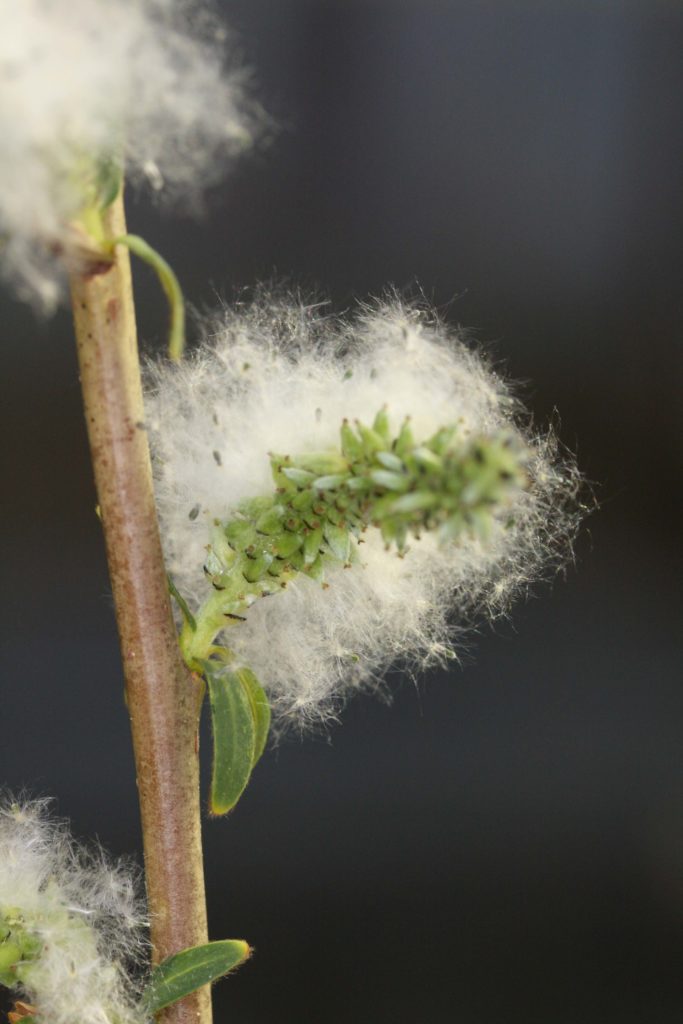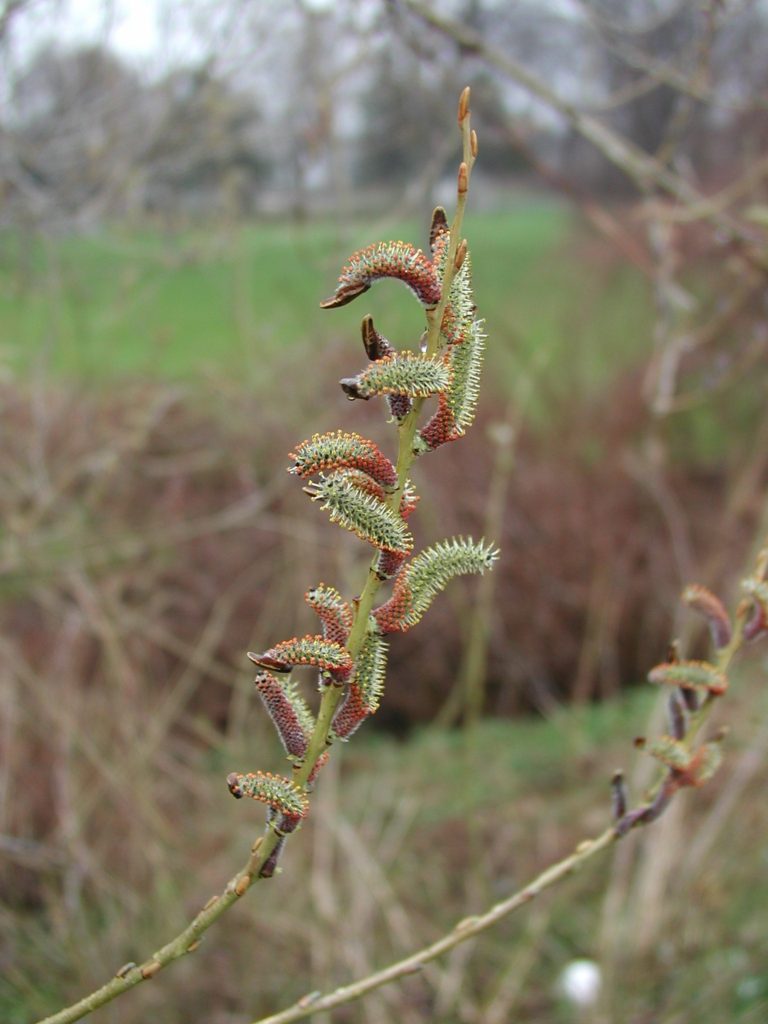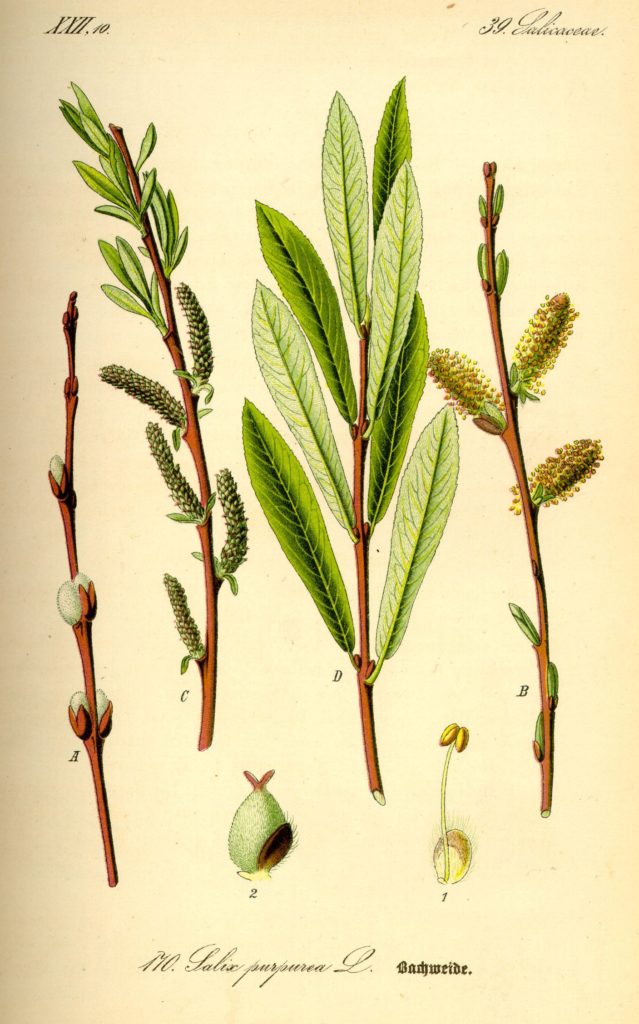A genetic architecture that is characteristic of the sex chromosomes of mammals is, for the first time, seen in a plant.

The Science
Sex in plants can be befuddling. Most species are hermaphrodites, expressing both male and female gametes in one individual. But some, including shrub willow Salix purpurea, employ the evolutionary strategy we are far more familiar with: differentiating into male and female sexes. For the first time, the sex chromosomes of shrub willow have been sequenced with sufficient resolution to analyze their structure. Scientists found both a gene likely important for sex determination and a shared genetic architecture with Y chromosomes in mammals: a structure that helps correct deleterious mutations.
The Impact
Shrub willow and its close relative Populus trichocarpa, or the poplar tree, are potential biofuel feedstocks of interest to the U.S. Department of Energy (DOE). (Poplar is a Flagship Plant.) To engineer them, researchers need to select and breed cultivars for the next generation. Understanding the mechanisms by which they reproduce can help guide breeding efforts. For example, discovering genetic markers of sex enables scientists to develop molecular assays that can distinguish males and females even when plants with multi-year generation times are young and haven’t physically differentiated. Understanding mechanisms of sex determination could also lead to new approaches to accelerate flowering, which can speed the pace of breeding. Once plant cultivars are optimized, the knowledge could also help prevent flowering, which would enhance the biosafety of genetically engineered trees.

Summary
The shrub willow differentiates into males and females, a development conferred by its sex chromosomes. In humans, males are “heterogametic”: they have different sex chromosomes, i.e., XY instead of XX. But, like some plant and songbird species, the system in shrub willow is flipped: females are heterogametic. To avoid confusion with the mammalian system, the sex chromosomes are called Z and W instead of X and Y, and ZW rather than ZZ encodes for females.
To better understand how sex determination works in shrub willow, researchers investigated the structures of the sex chromosomes of one male and one female specimen. Stephen DiFazio, plant biologist at West Virginia University (WVU), led the study’s international team, which included scientists from Oak Ridge National Laboratory and the U.S. Department of Energy (DOE) Joint Genome Institute (JGI), a DOE Office of Science User Facility located at Lawrence Berkeley National Laboratory. The JGI sequenced the shrub willows through the Community Science Program, using long-read sequencing to assemble the repetitive areas of the complete sex chromosomes. The results were published in Genome Biology.
The team found that the shrub willow’s W chromosome has palindromic structures, the first time seen in a plant sex chromosome. Palindromes are large inverted repeats with highly similar sequences so that their sequences read the same (or nearly) backward and forward, like the name “Hannah.” Palindromes are thought to be important structures in the human Y chromosome because, like W chromosomes, they lack a partner with which to homologously recombine. Palindromes provide an alternative; because of their internal sequence similarity, they enable gene copies to fold back on each other and thus be used as templates to correct mutations. This process, called gene conversion, helps maintain the integrity of the sequences. The variety of palindromes observed in nature — for example, in humans Y chromosomes and some songbird W chromosomes — suggest that they are advantageous enough to have evolved multiple times independently.

The researchers also found a gene likely responsible for sex determination. Many genes differentiate the shrub willow’s sex chromosomes, so the researchers investigated poplar for which genes might be shared in common between poplar’s Y — poplar has an XY system — and shrub willow’s W chromosomes. One shared gene stood out in particular: a cytokinin response regulator that was expanded in a palindrome and shown to be undergoing gene conversion in willow. This gene regulates the expression of other genes in response to cytokinin, a key plant hormone, making it a plausible mechanism for sex determination in these two species and, perhaps, more generally.
Contacts:
BER Contact
Ramana Madupu, Ph.D.
Program Manager
Biological Systems Sciences Division
Office of Biological and Environmental Research
Office of Science
US Department of Energy
Ramana.Madupu@science.doe.gov
PI Contact
Stephen P. DiFazio, Ph.D.
West Virginia University
spdifazio@mail.wvu.edu
Funding:
This work was supported by the NSF Dimensions of Biodiversity Program (DEB-1542509 to S.D., DEB-1542486 to LBS, and DEB-1542599 to M.O.). Support was also provided by the National Natural Science Foundation of China (31590821, 31561123001, 31500502, 41871044), National Key Research and Development Program of China (2017YFC0505203, 2016YFD0600101), and the National Key Project for Basic Research (2012CB114504). The work conducted by the U.S. Department of Energy Joint Genome Institute is supported by the Office of Science of the U.S. Department of Energy under Contract No. DE-AC02-05CH11231.
Publication:
- Zhou R, et al., “A willow sex chromosome reveals convergent evolution of complex palindromic repeats.” Genome Biology 21, 38 (2020). [DOI: 10.1186/s13059-020-1952-4]
Related Links:
- Steve DiFazio on “Sex in the Salicaceae” at the 2019 JGI Genomics of Energy & Environment Meeting: http://bit.ly/JGI2019DiFazio
- JGI Community Science Program
- Salix purpurea genome on JGI Plant Portal Phytozome
By: Alison F. Takemura